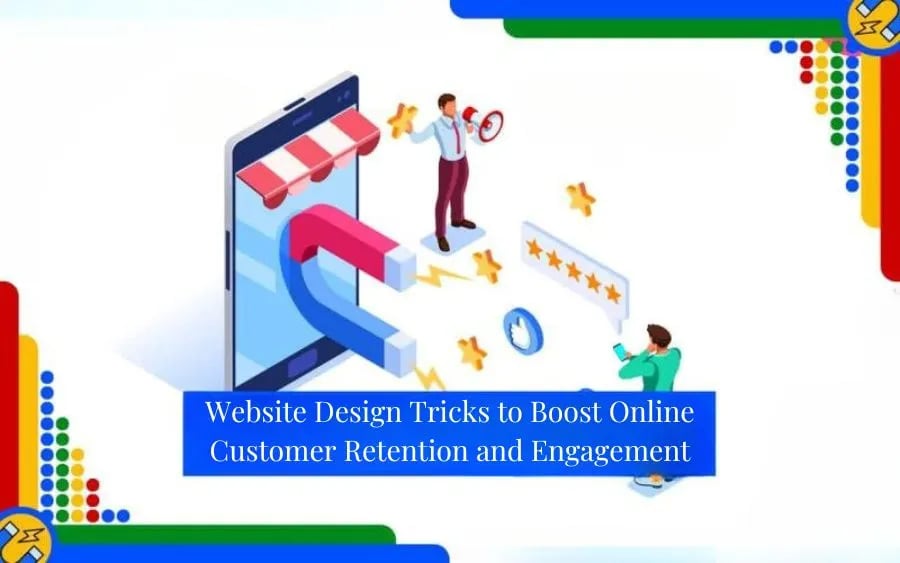
There’s no doubt that establishing a strong brand identity online is crucial for your business’s success. In today’s digital landscape, where customers have endless options, creating an impactful online presence can help you attract leads and convert them into loyal customers. At Mister Nguyen Agency, we understand the importance of integrating your website, social media, and design elements to form a cohesive brand. This guide will provide you with actionable insights to enhance your brand identity and effectively connect with your audience.
Understanding Brand Identity
A strong brand identity is crucial for your business’s success in the crowded digital landscape. It encompasses not just the visual aspects like your logo and color scheme but also the core values and mission that define who you are as a company, which can guide you through the important elements of brand building. Developing a clear brand identity allows you to connect with your audience on a deeper level, enhancing your ability to attract and retain customers.
Definition of Brand Identity
An effective brand identity is more than just a recognizable logo; it is the collection of elements that shape your customers’ perception of your business. It encompasses your values, mission, and the overall experience you provide to your audience. In essence, your brand identity serves as the voice of your business, communicating your purpose and vision to your target audience in a way that resonates with them. This connection plays a crucial role in establishing loyalty and trust with your customers.
Furthermore, an ideal brand identity is consistent across all platforms, including your website and social media channels. Consistency facilitates familiarity, making it easier for your customers to remember and recommend your brand. This unified approach helps you to effectively communicate your message and stands as a testament to your business’s professionalism, enhancing its credibility in the market.
Importance in the Digital Age
Identity is pivotal in the digital age where businesses compete for visibility and engagement in an oversaturated market. A strong online brand identity not only differentiates your business from competitors but also creates a genuine connection with your customers. With millions of companies vying for attention, establishing a recognizable and relatable identity becomes important to capturing leads and converting them into loyal customers.
Additionally, a well-defined brand identity enhances your presence on social media, where the visual aspect plays a significant role in user engagement. Customers are more likely to interact with brands that have a distinct and cohesive identity. In fact, studies suggest that brands with a strong visual identity see higher engagement rates, which ultimately translates to increased leads and conversions for your business.
A consistent and compelling brand identity serves as the foundation for establishing trust and loyalty with your audience. As your brand becomes recognized, you’ll find that it fosters deeper connections not only with existing customers but also captures the attention of potential leads. Take the time to develop your brand identity effectively; it’s an investment that pays off in the long run.
Defining Your Brand

While establishing a strong brand identity online, the first step is to define your brand clearly. A deep understanding of what your brand represents will lay the foundation for all your marketing efforts, from your website design to your social media presence. This clarity helps you stand out in an increasingly crowded digital marketplace where potential Strategies for Building a Strong Brand Identity Online become crucial for connecting with your customers and driving leads.
Mission and Vision Statements
Statements about your brand’s mission and vision should succinctly articulate its purpose and long-term aspirations. Your mission statement defines your brand’s immediate goals and the problem it aims to solve for its customers, while your vision statement paints a picture of what success looks like for your business in the future. Crafting these statements thoughtfully can guide your branding strategies, ensuring that they align with your overall objectives and resonate with your audience.
Clearly defined mission and vision statements provide a compass that directs all branding efforts. They serve as a reference point for decision-making and help maintain consistency in your brand’s messaging, whether on your website or across social media channels. This alignment is key to building a cohesive brand identity that strengthens customer trust and loyalty.
Core Values of Your Brand
Any brand worth its salt has a set of core values that inform its actions and decisions. These values are deeply rooted in your organization’s culture and should guide how you interact with customers, create content, and even design your website. Establishing your core values allows you to define what you stand for, forming an emotional connection with your audience that can lead to increased brand loyalty and trust.
Core values also help in differentiating your brand from competitors. When customers see a brand that genuinely embodies its values, they are more likely to feel a sense of connection and community. This connection enhances customer engagement and can turn leads into long-lasting relationships. By consistently communicating your core values through all touchpoints, including social media and email marketing, you not only establish credibility but also reinforce your brand identity.
Identifying Your Target Audience
The ability to identify your target audience is important in shaping your brand identity and crafting effective marketing strategies. Knowing who your customers are—demographics, interests, and pain points enables you to tailor your messaging, website design, and content to resonate deeply with those you aim to serve. This ensures that your brand speaks directly to the people most likely to engage with your products or services.
Brand identity is not just about who you are but who your customers believe you to be. By conducting thorough market research and leveraging social media analytics, you can gain insights into your target audience’s behaviors and preferences. This understanding empowers you to create tailored content and campaigns that not only attract potential leads but also foster a loyalty that is invaluable for your business, ultimately driving more traffic and conversions.
Developing a Visual Identity

Many businesses underestimate the significance of a strong visual identity in their online branding efforts. Your visual identity, which encompasses your logo, color palette, and typography, serves as the first impression for potential customers visiting your website or social media profiles. As a defining element of your brand, it should be consistent across all platforms to create a cohesive image. This consistency not only makes your brand instantly recognizable but also plays a crucial role in building trust and credibility with your audience.
Designing Your Logo
Logo design is more than just creating a visually appealing image; it encapsulates your brand’s mission and values in a simple and memorable way. When designing your logo, consider how it will resonate with your target audience and reflect the essence of your business. The best logos are versatile — they should look great on your website, social media, and even in printed materials, adapting well to different sizes and formats.
As you create your logo, ensure it stands out in a crowded digital landscape. Research is imperative; look at your competitors and analyze how you can differentiate your design. A strong logo can effectively simplify your business’s story into an iconic image that drives customer recognition and loyalty.
Choosing a Color Palette
Visual elements play a critical role in how customers perceive your brand, and your color palette significantly influences their emotions and behaviors. Colors evoke feelings and convey messages even without words; therefore, selecting the right colors can help enhance your brand’s identity and effectively communicate your business values. Choose a color palette that aligns with your brand personality and the interests of your target audience, as this will contribute to a more engaging experience on your website and social media platforms.
Palette selection should be strategic, as different colors can trigger various emotions. For example, blue often evokes trust and dependability, while red can signal energy and urgency. Utilize tools like Adobe Color or Coolors to experiment and refine your palette, ensuring it effectively represents your brand and appeals to your customers at a glance.
Selecting Typography
Any brand looking to make an impact must pay careful attention to its typography, as the choices you make in font style, size, and weight can convey a lot about your brand’s personality. Your typography should reflect your brand’s tone; whether it’s playful, professional, or creative, the right font can help set the mood for your content. Ensure that your chosen fonts are easily readable across all digital platforms, from your website to social media channels, catering to both customer engagement and accessibility.
Plus, typography consistency is just as important as visual elements like your logo and color palette. Utilize no more than two to three font styles that complement each other and maintain focus on readability. This will not only unify your online presence but also enhance the user experience on your website and increase your chances of converting leads into long-term customers.
Crafting Your Brand Voice
Despite the abundance of options available today, the voice of your brand can truly set you apart from the competition. Your brand voice is the personality your business conveys through every piece of communication, whether it’s on your website, in social media posts, or in marketing materials. Establishing a clear and distinctive tone not only helps you engage effectively with your customers but also enhances brand recognition and loyalty. When you communicate consistently with your audience, you encourage a deeper connection, enabling your leads to relate to your brand on a more personal level.
Establishing Tone and Style
Crafting your brand’s tone and style is integral to shaping how your audience perceives your business. Begin by defining the characteristics of your brand’s personality. Is it fun and playful, or serious and professional? Identifying your brand personality will guide the language you use, from playful phrases to formal jargon. Ensure that the tone reflects your mission and values, showing your unique qualities as a business and making it easier to connect with your audience.
Once you establish a tone that resonates with your target customers, incorporate it across your content. This approach allows for an authentic representation of your brand, reinforcing what you stand for and making your communications memorable. Keep in mind that the voice should resonate with your audience’s needs and preferences, enabling you to engage deeper as you share your story through various channels.
Consistency Across Channels
Across every platform where you share content, your brand voice must be coherent. Whether customers interact with you via your website, social media, or email marketing, a consistent tone ensures they recognize your brand immediately. This consistency builds trust and familiarity, allowing you to strengthen relationships with customers over time. If your voice resonates even when displayed in different formats, customers are more likely to engage with your brand, leading to improved business performance and increased loyalty.
The more consistently you project your brand voice, the more recognized and trusted your brand becomes. Use the same style of writing, vocabulary, and tone across all platforms to create a seamless experience for your customers. For instance, if your brand adopts a casual and approachable tone on social media, ensure this translates to your website and email communications. This cohesive presence will create a more unified branding image that your customers can easily relate to.
Adapting Voice for Different Audiences
Consistency doesn’t mean rigidity. While it’s important to maintain a coherent brand voice, you should also adapt your style for different audiences without losing your core identity. Understanding the preferences and needs of various audience segments allows you to tweak your language to align with their expectations. Whether you are targeting B2B clients or individual consumers, tailoring your voice to fit each segment will enhance engagement and relevance, helping you connect meaningfully with diverse groups.
A strategic approach to adapting your voice could include developing a more formal tone for professional audiences while employing friendly and informal language when addressing a younger demographic. Listening to your customers and analyzing their needs can guide how you adjust your communication. For example, when promoting your services on social media, you may choose a more casual and relatable voice, whereas, in your web content, a polished and informative tone may be more suitable. Balancing between your established brand voice and the specific needs of your audience will effectively engage them across various platforms.
Creating Engaging Content
Keep in mind that creating engaging content is one of the most powerful ways to build a strong online brand identity. It not only helps you connect with your audience but also conveys your brand’s voice and values effectively. Quality content can capture attention, drive traffic to your website, and ultimately convert leads into loyal customers. By prioritizing a diverse content strategy, you can effectively showcase your expertise while catering to various audience preferences.
Types of Content (Blogs, Videos, etc.)
Videos, blogs, infographics, podcasts, and social media posts are all effective types of content you can utilize to engage your target audience. Each medium has its strengths; for instance, videos can convey complex ideas quickly, while blogs are great for in-depth discussions. Utilize the following content types to enhance your brand identity:
| Content Type | Description |
| Blogs | Long-form content that shares insights and positions you as an authority in your industry. |
| Videos | Visual storytelling that captures attention and can be shared across social media platforms. |
| Infographics | Visual representations of complex data that are easy to share and digest. |
| Podcasts | Audio content that allows for deep dives into topics and engages your audience while they’re on the go. |
| Social Media Posts | Short updates that keep your audience informed and interactively engaged with your brand. |
Recognizing the impact of varied content types on your audience’s engagement will enhance your overall brand identity.
Aligning Content with Brand Values
Any strong brand not only seeks to capture attention but also emphasizes the importance of aligning all content with its core values. Every piece of content you create should reflect what your brand stands for; this reinforces your identity and builds trust with your audience. By integrating your brand values into your content strategy, you communicate authenticity, ensuring that your audience understands your mission and vision.
Brand alignment should be evident in everything from tone of voice to visual elements in your content. For example, if your brand promotes sustainability, consider creating content that highlights your commitment to eco-friendly practices, whether that be through informative blog posts or tutorial videos demonstrating your initiatives. This approach not only attracts customers who share similar values but also positions your business as a thought leader in your industry.
Strategies for High-Quality Content
Engaging with your audience through high-quality content is necessary for creating a strong brand identity online. Start by brainstorming topics that resonate with your target audience and conducting thorough research to ensure your information is accurate and valuable. Additionally, structuring your content well can enhance readability and engagement. For instance, using headers, bullet points, and visuals can break up text and make it more digestible.
Understanding your audience’s needs and preferences is crucial. Using analytics tools can help you gauge which types of content perform best and adapt your strategy accordingly. Keep in mind, the more you cater to your audience’s interests and pain points, the more likely you are to convert leads into loyal customers for your business. Over time, consistently delivering high-quality, relevant content will reinforce your brand identity and credibility in the digital marketplace.
Utilizing Social Media Effectively
Unlike traditional forms of marketing, social media allows you to engage with your audience in real-time, transforming the way your business interacts with customers. In this digital age, harnessing the power of social media can significantly enhance your brand identity, helping you connect with your target demographic and build lasting relationships. By employing a strategic approach, you can effectively design brand experiences that resonate with your audience and elevate your online presence.
Choosing the Right Platforms
On the vast landscape of social media, not all platforms are created equal, making it crucial to choose the right ones for your business. Understanding where your target audience spends their time is crucial. For instance, if your primary audience consists of young professionals and creatives, platforms like Instagram and LinkedIn may be ideal. Conversely, if you’re catering to a more diverse demographic, Facebook and Twitter can offer more expansive reach. By aligning your social media strategy with the habits of your customers, you enhance your opportunities for engagement and lead generation.
On the other hand, consider the unique features and demographics of each platform. For instance, TikTok thrives on short, engaging video content, making it ideal for brands looking to showcase creativity and spontaneity. Determine what types of content align with your brand values and audience preferences, allowing you to maximize impact and drive traffic back to your website. By strategically selecting the platforms that best match your business goals, you set the stage for a more robust brand identity online.
Building an Online Community
Utilizing social media effectively is not just about broadcasting your message; it’s also about creating a meaningful community around your brand. Building an online community involves encouraging conversation, fostering connections, and creating a sense of belonging among your followers. By engaging with your audience through targeted content, discussions, and interactive posts, you cultivate loyalty and deepen the relationship between your brand and your customers.
A thriving online community can serve as a powerful asset for your business. When customers feel connected not only to your brand but also to one another, they are more likely to advocate for your business, share their experiences, and provide valuable feedback. Community-driven engagement not only enhances your brand’s visibility but also provides insights into customer preferences, allowing you to tailor your offerings and marketing strategies effectively.
Engaging with Followers
Online engagement with your followers is a vital component of building a strong brand identity. By responding to comments, sharing user-generated content, and asking open-ended questions, you invite dialogue and demonstrate that you value your customers’ opinions. This two-way communication fosters trust and encourages a sense of community, making your customers feel heard and appreciated.
With consistent interaction and genuine engagement, you establish a brand persona that your audience can relate to. Keep in mind that the digital landscape is constantly evolving, and staying nimble in your engagement strategy allows you to adapt and maintain relevance. Utilizing tools to track engagement metrics can also help you understand which types of posts resonate most with your audience, enabling you to refine your approach for optimal results.
Monitoring and Evolving Your Brand

All businesses in today’s digital age must recognize that building a strong brand identity online is not a one-time task but an ongoing process that requires continuous monitoring and evolution. As your audience grows and changes, so should your approach to branding. Regularly checking in on your brand’s health—in terms of its reputation and relevance—will not only help you maintain a strong presence but also solidify your connection with customers and leads.
Managing Online Reputation
One crucial aspect of maintaining a strong brand identity is actively monitoring your online reputation. This involves keeping an eye on what is being said about your brand across various platforms, including social media, review sites, and blogs. Utilizing digital tools to track mentions of your business allows you to respond quickly to both positive feedback and negative reviews. Addressing concerns transparently can turn a negative experience into an opportunity to showcase your brand’s commitment to customer satisfaction.
Furthermore, encouraging satisfied customers to share their experiences not only helps build credibility but also serves as powerful social proof. By fostering a community that highlights positive interactions, you enhance your brand’s image and strengthen its position in the market. Your reputation is a vital component of your identity online; thus, managing it effectively can improve customer trust and loyalty over time.
Staying Updated on Trends
With the rapid pace of change in the digital landscape, staying updated on trends is imperative for any business looking to thrive online. Trends in technology, consumer preferences, and social media norms can significantly impact how customers perceive your brand. Regularly engaging with industry news, following thought leaders, and participating in relevant discussions will help you keep your branding strategies fresh and aligned with current expectations.
Your brand’s evolution should be strategic, informed by trends that resonate with your target audience. It’s important to leverage insights from these trends to enhance your design, messaging, and customer engagement strategies. This not only keeps your brand relevant but also positions you ahead of competitors who may not be as agile in adopting new practices.
Iterating Based on Feedback
Feedback from your customers is an invaluable resource in refining your brand identity online. Actively soliciting input through surveys, social media engagement, or direct conversations can provide insights into how your audience perceives your business. This feedback loop allows you to identify areas for improvement and implement changes that align with your customers’ needs and preferences, ultimately helping to strengthen your brand identity.
For instance, if you discover through customer surveys that your audience prefers a more casual tone in your content, you can adjust your brand voice accordingly. By demonstrating responsiveness to feedback, you showcase your commitment to your audience, fostering trust and loyalty. In essence, iterating based on feedback not only enhances your brand’s appeal but also ensures that you are consistently meeting the evolving expectations of your customers and leads.
Conclusion
As a reminder, building a strong brand identity online is crucial for the long-term success of your business. It requires a strategic approach that encompasses understanding your mission, vision, and values, while also developing a visual identity that resonates with your target audience. By crafting a unique brand voice and offering quality content, you can engage your customers and convert leads into loyal supporters. Remember to leverage social media effectively; it’s a powerful tool that can amplify your brand reaching more potential customers than you might think.
Your website is the cornerstone of your online presence, and investing time in optimizing its SEO will greatly enhance your visibility in search results. At Mister Nguyen Agency, we understand that an effective brand is more than just a logo; it’s about creating an authentic representation of your business that speaks to your audience. By staying adaptable and continually evolving your brand strategy, you will ensure that you remain relevant and connected with your customers and leads. Embrace the journey of building your brand identity online; your efforts will pay off in fostering trust and recognition within the digital marketplace.











